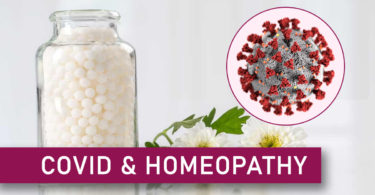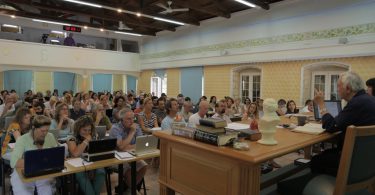
ABSTRACT
Polycystic ovarian syndrome (PCOS) is a widespread reproductive (endocrine) disorder in women of reproductive age associated with many health conditions. It is depicted by various clinical presentations such as hyperandrogenism, polycystic ovaries, ovulatory dysfunction and irregular menstruation. Considering the side effects kindred with conventional treatment and the patients who fail to respond to these measures, there is a demand for a complementary therapy that would alleviate symptoms of PCOS without side effects. Homeopathy is a complementary system of medicine that has been satisfyingly used in different disease conditions, including PCOS.
KEYWORDS: Homoeopathy, Polycystic ovarian disease, Polycystic ovary syndrome, Obesity, Insulin Resistance
INTRODUCTION1, 2
Polycystic Ovarian Syndrome which is more popularly known as PCOS is a condition where patients suffer from many small cysts in their ovaries. The meaning of ‘Poly’ is many. These cysts occur when the regular changes that happen to the normal menstrual cycle are disrupted. This genesis the ovary to enlarge and secrete enormous amounts of estrogenic and androgenic hormones. When this happens along with lack of ovulation, it results in infertility.
Polycystic Ovarian Syndrome or PCOS is sometimes mentioned as Polycystic Ovarian Disease or PCOD. PCOS is a condition where the patient suffers irregularity in the monthly menstrual cycle and has surplus androgens which are the male hormones. Polycystic ovarian disease is an ill-defined heterogeneous condition with a complex pathophysiology.
CAUSES3, 4, 5
There is no particular reason as to why Polycystic Ovarian Syndrome occurs. No single etiologic factor fully accounts for the spectrum of abnormalities in PCOD.
Some of the important causes of Polycystic Ovarian Syndrome are as follows.
- Familial aggregation of PCOD among mothers and siblings has suggested evidence of autosomal transmission. Heredity is one of the considerable causes of PCOS and can be transferred as a hereditary component from the mother to her daughter. If there has been an existing family history of PCOS, then there are high possibilities of Polycystic Ovarian Syndrome to be transferred to the next generation since heredity and genetic elements play a vital role in this regard.
- Diet and composition of the diet itself are unlikely to be an etiological factor of PCOD. High-calorie diet intake resulting in obesity may modify the clinical manifestation of PCOD. Obesity is another cause that can give raises PCOS. This is mostly because of the fact that the fatty tissues are hormonally very active and produce high amounts of estrogen which causes an interference with the normal ovulation cycle.
- Higher levels of insulin is a contributor to the rise of PCOS. Insulin is a hormone produced by the pancreas of the human that allows the cells of the body to use sugar as the body’s primary energy source. Now, if the cells of the body become resistant to insulin’s action, the body produces more insulin which in turn raises the levels of sugar in blood. At this point, there is a hormonal imbalance in the body and excess insulin might increase the production of androgen which interferes with the normal ovulation cycle thereby causing PCOS.
PATHOPHYSIOLOGY5, 6, 7
The exact pathophysiology of PCOD is not known. The manifestations of biochemical abnormalities include – high Luteinizing hormone (LH), high LH/FSH (Follicle stimulating hormone) ratio, increased androgen production, and high estrogen levels from the peripheral conversion of androgen in adipose tissue. Two important hypotheses have been inferred. Firstly, the basic defect in PCOD is androgen excess from the theca cells of the ovary. Secondly, insulin resistance leading to hyperinsulinemia contributes to overall androgen production leading to hirsutism, menstrual problems, and anovulation.
SYMPTOMS5, 8, 9, 10
The Rotterdam criteria define the syndrome of PCOD as the presence of any two of the following three criteria: ultrasound appearance of polycystic ovaries, menstrual disturbances, evidence of hyperandrogenism, acne, hirsutism, etc.
Characteristics of PCOD may show at any age varying from childhood (premature puberty), teenage years (hirsutism, menstrual abnormalities), early adulthood, and middle life (infertility, glucose intolerance) to later life (diabetes mellitus and cardiovascular disease).
If the ovaries tend to produce overabundance androgen, the chances of Polycystic Ovarian Syndrome are increased along with causing acne and hirsutism. Signs of androgen excess are manifested as hirsutism, acne, virilization, and male pattern balding.
The chief signs and symptoms of Polycystic Ovarian Syndrome are as given below.
- Amenorrhea may be primary or secondary
- Abnormal or irregular menses
- Immoderate bleeding along with severe pelvic pain during menses
- Hairs on body, face and parts of the body where men generally possess hairs
- Thinning or loss of hair from head or male baldness pattern
- Appearance of pimples on face, upper back and chest
- Appearance of flaps of skin in the neck area or the armpits
- Blackening of the skin especially along neck creases, underneath the breasts and in the groin
- Weight Gain – Sudden weight gain without any known cause or difficulty in losing weight.
- Problems of fertility and pregnancy – The reproductive outcome in PCOD women is poor due to associated ovulatory defects.
The long-term health hazards of PCOD include type II diabetes mellitus, dyslipidemia, cardiovascular disease, and endometrial cancer. Research has revealed that women with PCOS have a low grade inflammation that the production of substances by the WBCs for fighting infection which helps in the stimulation of the polycystic ovaries for producing androgens which can also lead to blood vessel and heart problems.
DIAGNOSIS5, 11
There is no single test for the diagnosis of Polycystic Ovarian Syndrome. To beginning with the diagnosis of PCOS, the physician starts with the medical history of the patient which is followed with physical exams along with different tests.
- Clinical history and physical examination – The doctor begins with conducting a physical examination where the blood pressure, BMI and waist size are checked along with family history of menstrual disturbances, menstrual history, history of weight gain. The physicians examine for excessive hair or acne on face, chest, back and any discoloration of the skin. It is also examined for loss of hair or other health states like enlarged thyroid gland.
- The next measure of diagnosis is a pelvic exam for the signs of redundant manly hormones like an enlarged clitoris and for checking whether the ovaries are swollen or enlarged.
- Then a pelvic ultra sonogram is conducted which is executed for a thorough examination of the ovaries for cysts and examine the lining of the uterus.
- At last, a few blood tests are conducted to examine for the raised levels of the hormone androgen which are literally the male hormones. The levels of cholesterol and diabetes are also checked.
Biochemical profile manifests hyper secretion of insulin, hyper secretion of LH, high LH: FSH ratio, high levels of free testosterone and Dehydroepiandrosterone sulfate, low Sex hormone-binding globulin, and elevated prolactin. In ultra sonogram, ovaries are described as polycystic if there are ten or more 2-8 mm cysts aggregated around a dense stroma or scattered throughout an increased stroma.
HOMEOPATHIC TREATMENT FOR PCOS3, 12, 13
In homoeopathy, treatment of PCOS is by individualizing the patients by considering their mental, physical and genetic makeup. So that there will be notable increase in possibilities of conception with homoeopathic individualized medicines. Homeopathic perspective towards treatment of PCOD is constitutional, taking into account the presenting complaints along with physical, mental and inheritable make-up that individualizes a person.
REPERTORIAL APPROACH OF PCOD:
14GENITALIA FEMALE – TUMORS; Ovaries: Apis., apoc., ars-i., ars., bar-m., calc., coloc., fl-ac., graph., hep., iod., Lach., Lyc., plat., podo., staph., stram., syph., thuj., zinc.
Right: Apis., fl-ac., iod., Lyc., podo.
Left: Lach., podo.
Cysts: Apis, bovista, bufo, cantharis, carbo animalis, colocynth, iodium, kali brom., lachesis, mercurius, murex, platina, prun-s., rhododendron, rhus tox., thuja.
15OVARIES – Cystic: Ap.; Apoc.; Arg-m +; Aur.; Bov +; Form.; Kali-br.; Iod.; Lyc.
16FEMALE SEXUAL ORGANS – CYSTS, DROPSY:Apis.; Apoc.; Arn.; Aur-i.; Aur-m-n.; Bell.; Bov.; Bry.; Chin.; Coloc.; Con.; Ferr-i.; Graph.; Iod.; Kali-br.; Lach.; Lil-t.; Lyc.; Med.; Ov.; Rhod.; Sabin.; Ter.; Zinc.
CONCLUSION
Homeopathic treatment for Polycystic Ovarian Syndrome is relatively productive in nature and certainly the finest alternative medication for this condition. Homeopathic medicines are preferred in this regard because its ultimate focus is on curing the malady from the roots and not just suppressing the symptoms. With the aid of the homeopathic medicines, one can restore and balance of the vitality of the body for an overall well being.
REFERENCE
1. Parveen S, Das S. Homeopathic Treatment in Patients with Polycystic Ovarian Syndrome: A Case Series. Homoeopathy. 2021 Aug; 110(3):186-193. doi: 10.1055/s-0041-1725039. Epub 2021 May 12. PMID: 33979843.
2. Barthelmess E K, Naz R K. Polycystic ovary syndrome: current status and future perspective. Front Biosci (Elite Ed). 2014 Jan 1; 6(1):104-19. doi: 10.2741/e695. PMID: 24389146; PMCID: PMC4341818.
3. Pallavi RN. Polycystic ovarian syndrome and homoeopathy. 2020 Jul 06. Homeobook. Available at: https://www.homeobook.com/polycystic-ovarian-syndrome-and-homoeopathy/ (Accessed 2023 Jun 17)
4. Franks S. Polycystic ovary syndrome. N Engl J Med. 1995 Sep 28; 333(13):853-61. Doi: 10.1056/NEJM199509283331307. Erratum in: N Engl J Med 1995 Nov 23; 333(21):1435. PMID: 7651477.
5. Mukherjee G G, Chakravarty B N. Polycystic Ovary Syndrome An Update. (FOGSI). Jaypee Brothers Medical Publishers (P) Ltd., New Delhi. 2007.
6. Nelson V L, Legro R S, Strauss J F 3rd, McAllister J M. Augmented androgen production is a stable steroidogenic phenotype of propagated theca cells from polycystic ovaries. Mol Endocrinol. 1999 Jun; 13(6):946-57. doi: 10.1210/mend.13.6.0311. PMID: 10379893.
7. Conway G S, Clark P M, Wong D. Hyperinsulinaemia in the polycystic ovary syndrome confirmed with a specific immunoradiometric assay for insulin. Clin Endocrinol (Oxf). 1993 Feb; 38(2):219-22. doi: 10.1111/j.1365-2265.1993.tb00996.x. PMID: 8435903.
8. Shareena C P, Vinitha E R. (2021, December 25). Effectiveness of Homoeopathic Medicines in the Treatment of Polycystic Ovarian Disease – A Retrospective Case Series. International Journal of AYUSH Case Reports, 5(4), 343-351. Retrieved from https://www.ijacare.in/index.php/ijacare/article/view/264
9. Rotterdam ESHRE/ASRM-Sponsored PCOS Consensus Workshop Group. Revised 2003 consensus on diagnostic criteria and long-term health risks related to polycystic ovary syndrome. Fertil Steril. 2004 Jan; 81(1):19-25. doi: 10.1016/j.fertnstert.2003.10.004. PMID: 14711538.
10. Hart R, Hickey M, Franks S. Definitions, Prevalence and Symptoms of Polycystic Ovaries and Polycystic Ovary Syndrome. Best Pract Res Clin Obstet Gynaecol. 2004 Oct; 18(5):671-83. doi: 10.1016/j.bpobgyn.2004.05.001. PMID: 15380140.
11. Kumar P, Jeffcoate S N, Malhotra N. Jeffcoate’s Principles of Gynecology. Polycystic Ovary Syndrome. Jaypee Brothers Medical Publishers (P) Ltd., New Delhi. 6th edition. 2008.
12. Alekar A P. Homoeopathic Concept of Remedy Relationship and Its Utility in Management of Polycystic Ovarian Syndrome: A Case Report. Adv Mind Body Med. 2023 Winter; 37(1):17-21. PMID: 37119542.
13. Lamba P, Sharma D, Sinnarkar V V. Polycystic Ovarian Syndrome Treated with Individualized Homeopathy: A Case Report. Altern Ther Health Med. 2022 Sep; 28(6):60-64. PMID: 34653021.
14. Kent J T. Repertory of the Homoeopathic Materia Medica. 9th Impression. New Delhi: B. Jain Publishers Pvt. Ltd.; 2011.
15. Phatak S R. A Concise Repertory of Homoeopathic Medicines. 4th Revised and Corrected Edition. Noida: B. Jain Publishers (P) Ltd.; 2005.
16. Boericke W. Boericke’s New Manual of Homoeopathic Materia Medica with Repertory. 3rd Revised and Augmented Edition. New Delhi: B. Jain Publishers (P) Ltd.; 2017.





